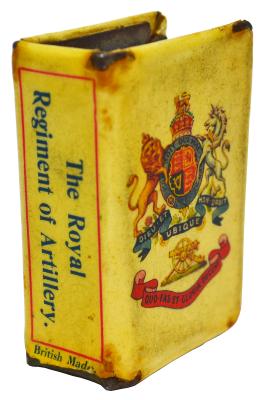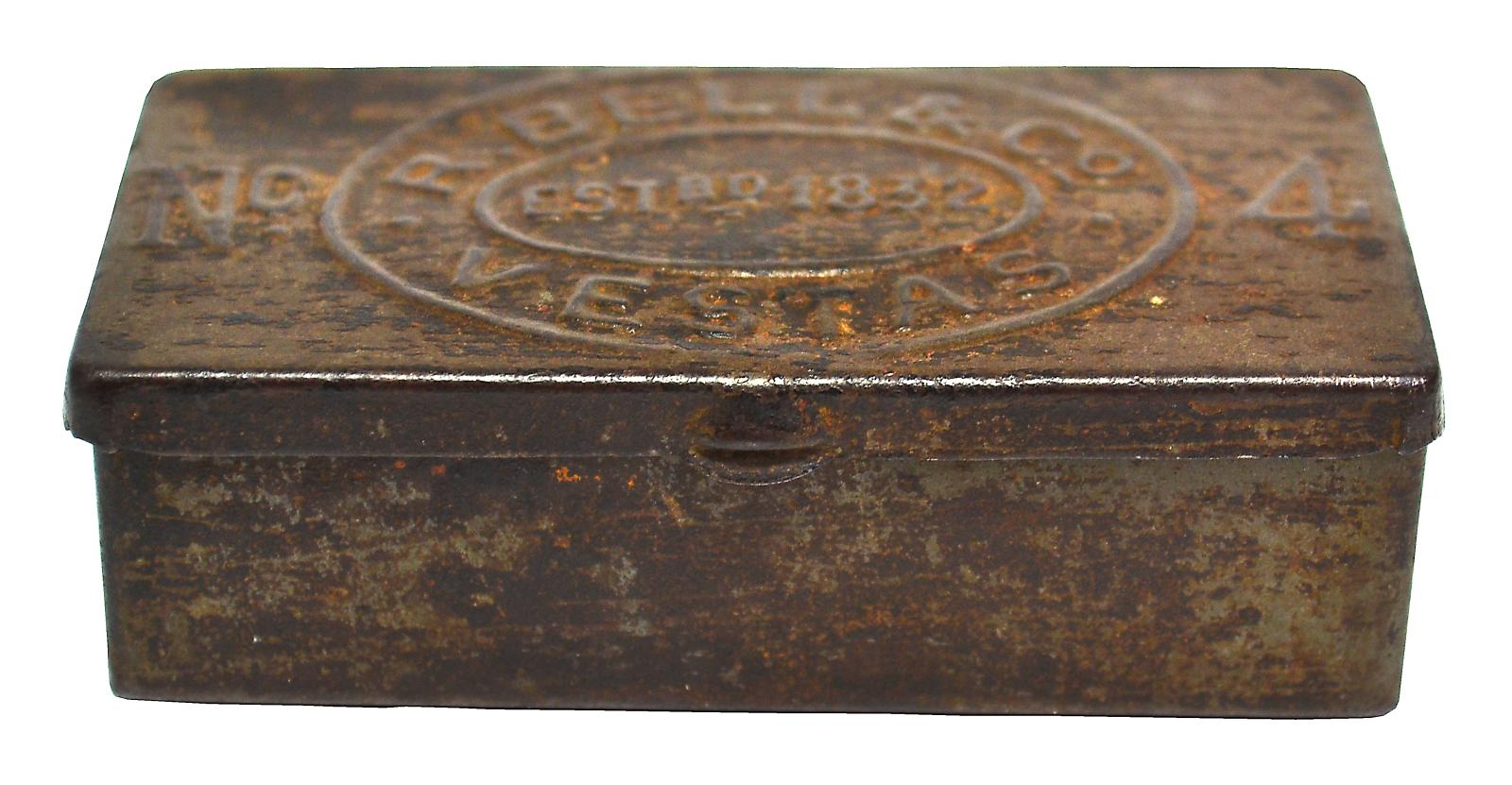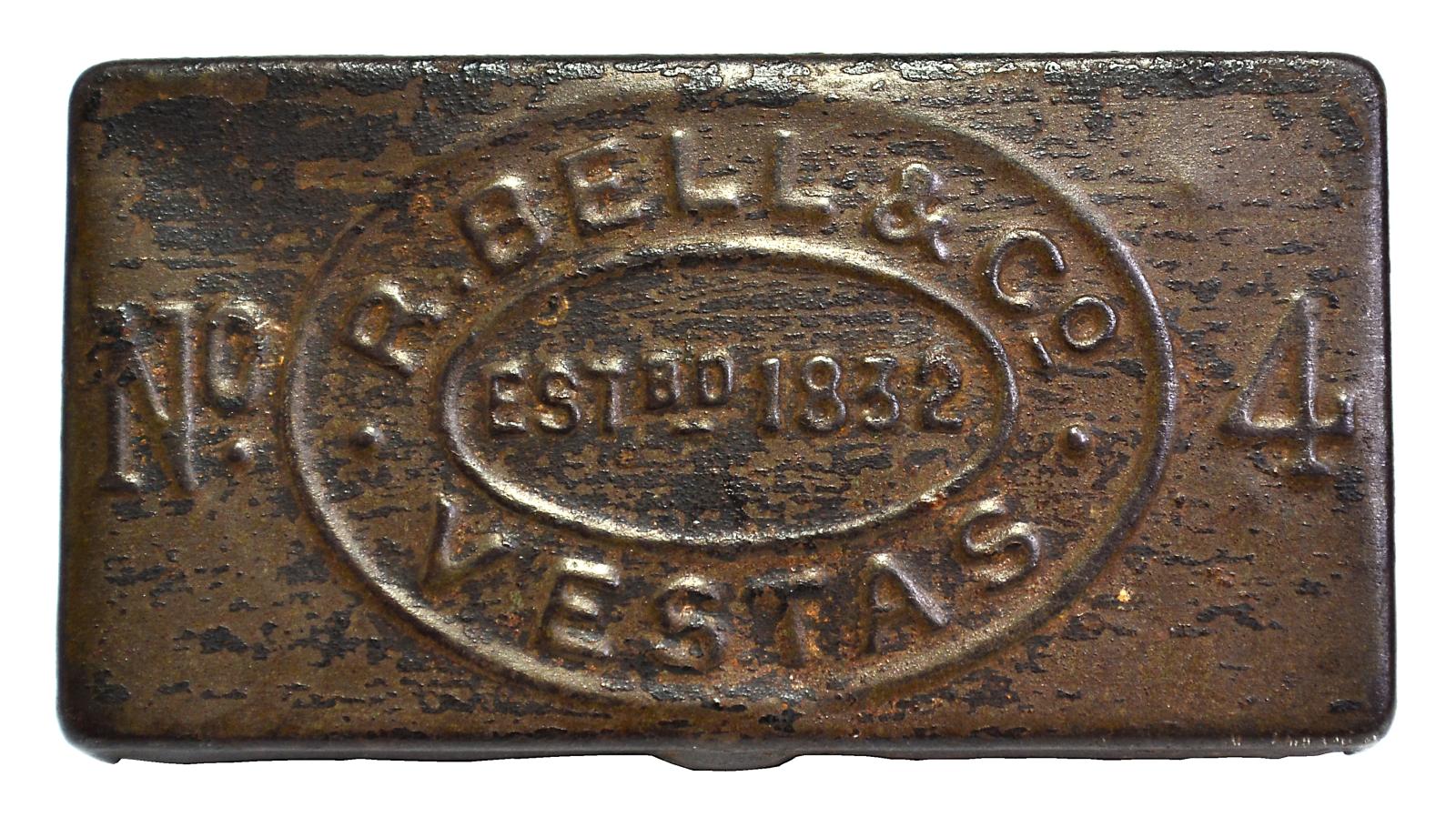METAL MATCH BOX HOLDER
1916 - 1919Army issue matchbox holder, including matches, belonged to John Hickson. Small metal box with hinged lid, text on lid. 17 matches inside, wooden with lime green heads.
This is part of the kit worn and used by John Hickson when serving with the Australian Imperial Force (AIF) during World War One.
John was born in England in c1888. Sometime as a child his mother remarried and changed their last name to Tomlinson. In 1911 the family migrated to Western Australia and settled down in Prospect Road, Armadale. John soon left and found work at the 281 mile siding along the Trans Australian Railway.
John enlisted under his step-father's name of Tomlinson at Kalgoorlie in 1 February 1916 aged 27. He entered Blackboy Hill camp for training but was sent to Victoria to complete his artillery training before arriving in England in August 1916 and joining the 3rd Division Ammunition Column (3DAC). On 24 November his unit was sent to France. During his service he was wounded in action at Ypres in 24 June 1917 but luckily only required minimal treatment.
John returned to Western Australia on 24 July 1919 and was discharged from service in November.
On his return to Armadale John packed his kit away and though he always took it with him when ever he moved, he always kept it packed away.
John married Millicent Alice Grace Tame in 1927 having reverted back to using the name Hickson. John briefly worked for the Western Australian Government Railway before he and Millicent purchased an orchard along Railway Avenue.
John died on 3 April 1976, aged 87, Millicent died 2 April 1977 aged 89, there is no record of them having children.
Details
Details
[R.BELL & Co. /ESTBD 1832 /VESTAS/ No. 4]
This near complete World War One uniform is part of collection that tells the story of the City of Armadale's connection to armed conflicts around the world from the late 1800s to today. The collection explores the experiences of people associated with the City of Armadale who went to war, their experiences when they returned as well as how these conflicts impacted the community who stayed behind.




